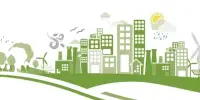Carbon dioxide has been building up in the ocean and atmosphere for the past 200 years as a result of industries, cars, planes, and other sources of the potent greenhouse gas.
A reality check on the limitations of carbon dioxide removal and a warning that marine heatwaves need to be defined clearly so that communities may adapt are provided by two recent studies by University of Hawai’i at Manoa oceanographers that were published in Nature.
Carbon dioxide removal is not the golden ticket
According to all the projections made by the Intergovernmental Panel on Climate Change, the world’s governments must drastically and quickly cut back on their use of fossil fuels if they want to keep global warming to 1.5 to 2 degrees Celsius above pre-industrial levels.
In addition, the pathways to limit warming also call for removing carbon dioxide from the atmosphere using technologies that are currently being developed.
However, David Ho, oceanography professor at the UH Manoa School of Ocean and Earth Science and Technology (SOEST), wrote in his recent Nature article, “We must stop talking about deploying carbon dioxide removal as a solution today, when emissions remain high as if it somehow replaces radical, immediate emission cuts. We have to shift the narrative as a matter of urgency.”
He emphasizes that this will be crucial in the coming years as pressure grows to create technologically based climate solutions. Ho instead calls for a swift decarbonization of the world’s energy systems, particularly in light of the fact that low emissions are necessary for effective carbon dioxide removal.
“Humanity has never removed an atmospheric pollutant at a global, continental or, even, regional scale we have only ever shut down the source and let nature do the clearing up,” he wrote, in a warning about not relying on carbon dioxide removal in case it does not work. “We must slow the carbon clock to a crawl before we can turn it back.”
We must stop talking about deploying carbon dioxide removal as a solution today, when emissions remain high as if it somehow replaces radical, immediate emission cuts. We have to shift the narrative as a matter of urgency.
Professor David Ho
Clarifying marine heatwaves
Clearer definitions of marine heatwaves are required so that coastal communities can prepare for these occurrences and resource managers can more effectively prioritize mitigation strategies, according to research by Malte Stuecker, Brian Powell, and their co-authors from the SOEST Department of Oceanography who are all members of the U.S. NOAA Marine Ecosystem Task Force.
“Clearly communicating baselines for assessing ocean warming is essential for understanding extreme events and how they will affect marine ecosystems and livelihoods in the future,” the co-authors wrote.
The researchers point out that two distinct phenomena short-lived intense episodes and long-term warming trends are currently referred to as “marine heatwaves.” They note that the communication breakdown is “having real-world consequences” and worry that “the public might become desensitized to the real threat of marine heatwaves.”
The authors advise using the term ‘long-term temperature trends’ to refer to variations in ocean surface temperatures that occur over decades or more and are predominantly caused by rising levels of anthropogenic greenhouse gases.
On the other hand, they advise against using the term ‘marine heatwave’ for anything other than ocean temperature increases that are brief and abnormally warm in comparison to what would normally be expected at a particular location and time, as determined by a changing, recent climatological reference period.
Finally, use of the term ‘total heat exposure’ is recommended to describe the combination of long-term warming and marine heatwaves.
The paper notes, “by adopting our suggested ocean temperature communication framework, scientists will be able to better equip marine resource decision makers to assess and prepare for risks associated with different types of ocean temperature change.”
In order to guarantee a more stable climatic path for future generations, community members, resource managers, innovators, legislators, and investors all come to the table. These publications illustrate the intricacies as well as the need for accuracy and data-driven decision-making.
















